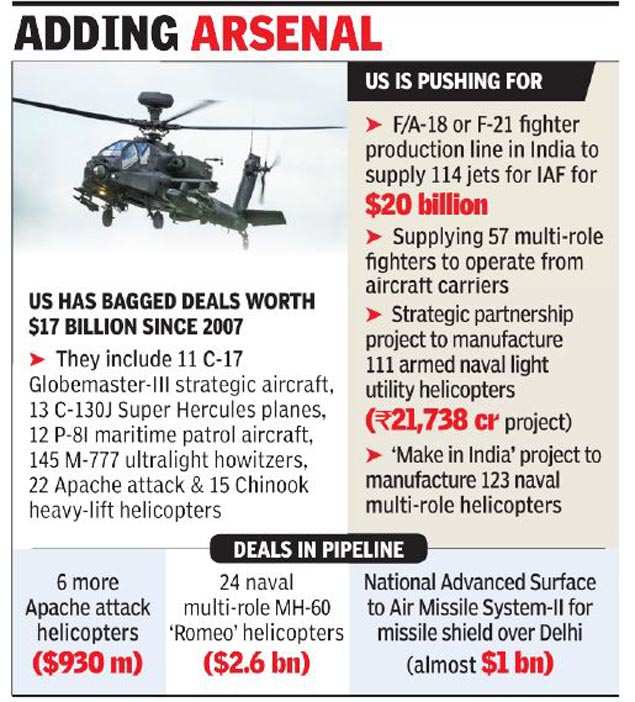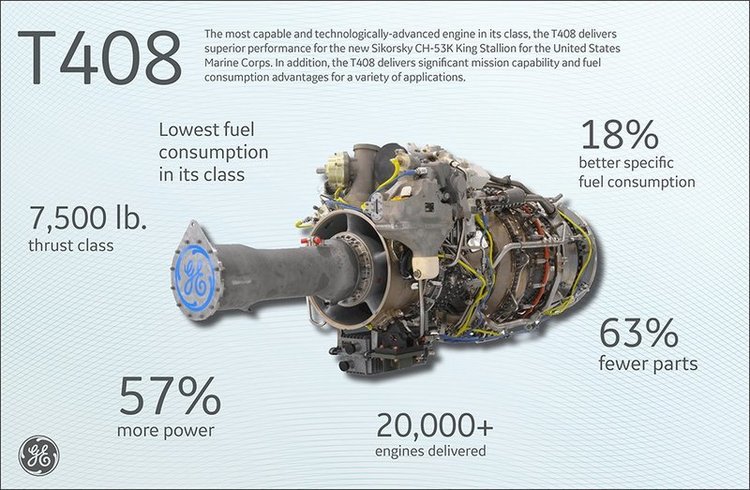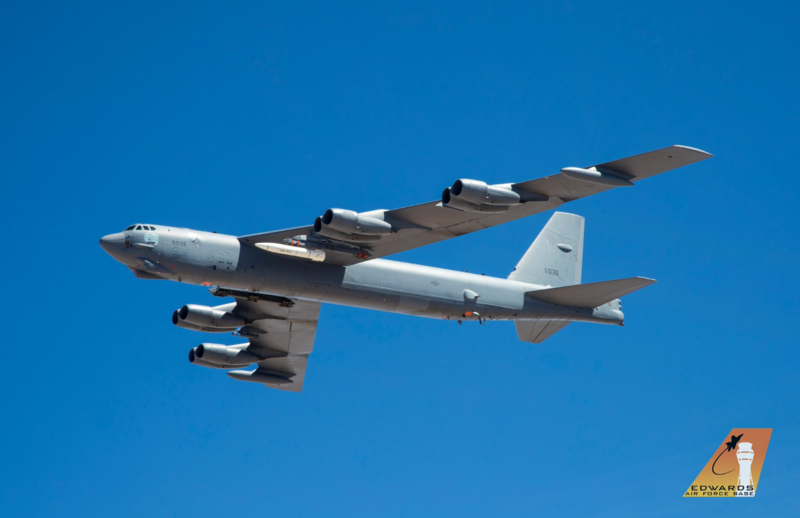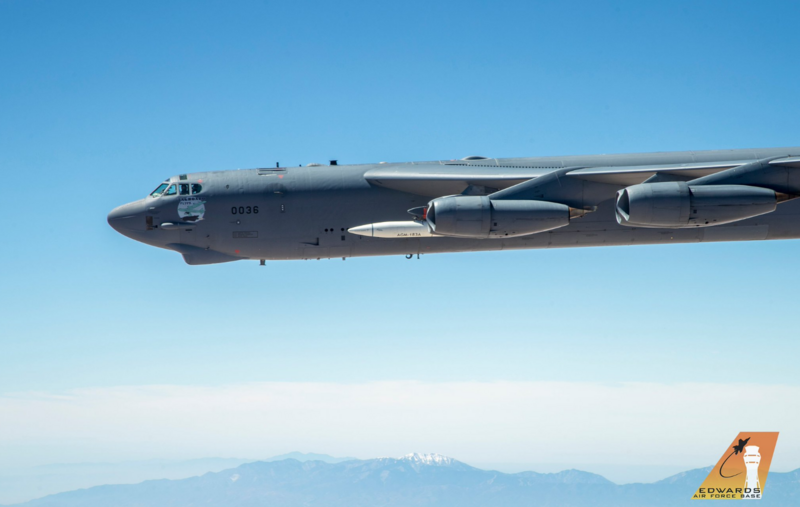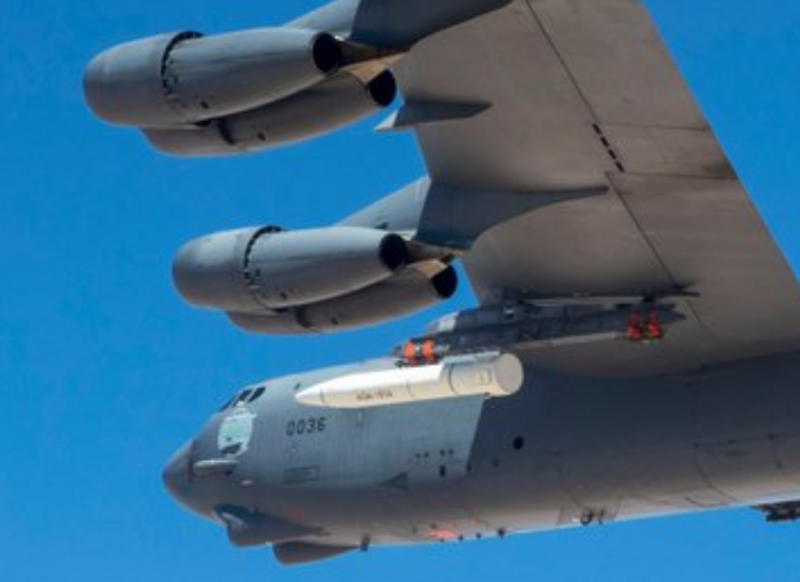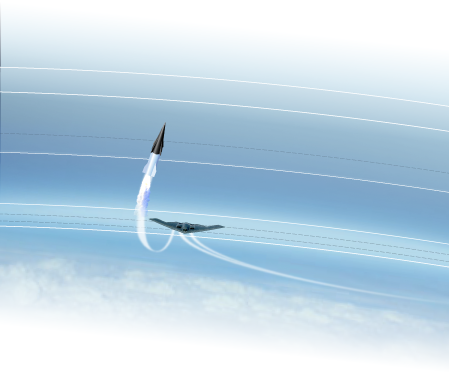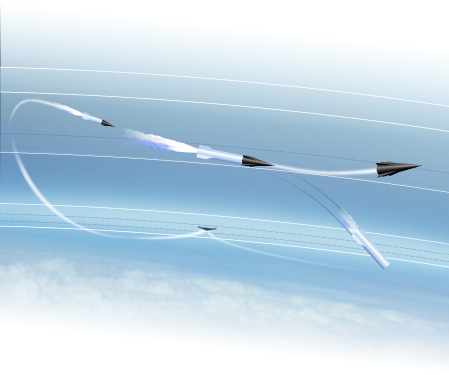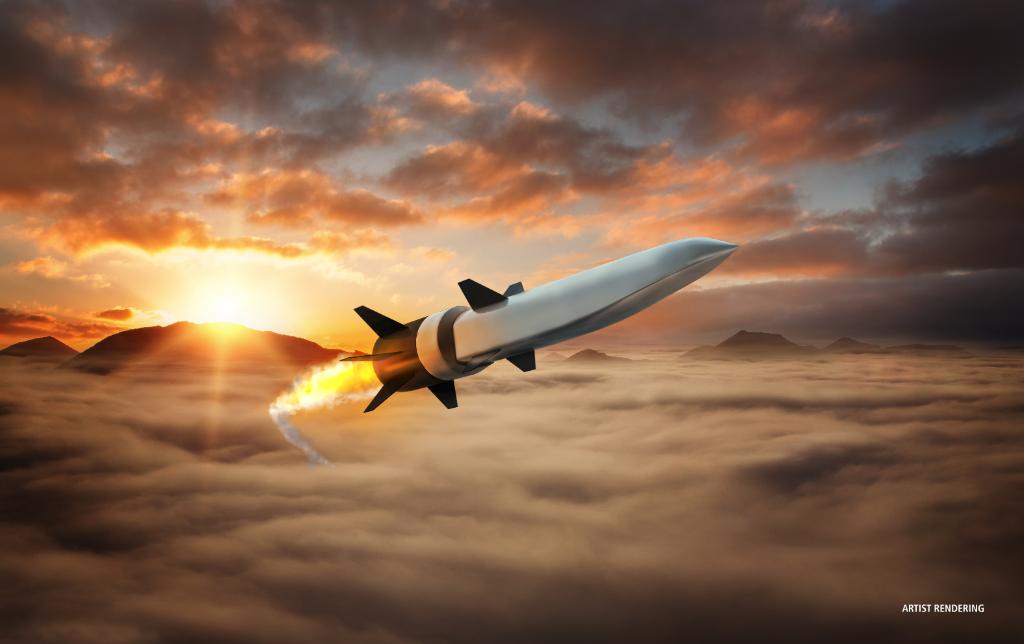ldev wrote:
So ARRW (AGM-183a) appears to be rocket powered (engine being developed by Aerodyne) and will be carried/dropped from an aircraft platform, maybe a B-52 or maybe a smaller fighter aircraft depending on the size of the vehicle plus the rocket booster. I read on other sites that it will climb to about 100,000 feet and attain a speed of Mach 20, about 15,000 mph where the rocket booster will be jettisoned and then dive down to the target with the ability to maneuver while diving down. This will be one bad-ass weapon.
And HCSV, hypersonic conventional strike weapon will use, again according to other sites, existing mature technologies for an air-breathing, air launched strike weapon in the Mach 5-6 range for conventional global precision-strikes i.e. ability to strike any target anywhere in the world in 1 hour. It will be interesting to see ultimately what engine powers it.
AGM-183A is nothing but a USAF weapon based off of DARPA's Tactical Boost Glide weapon demonstrator (Lockheed Martin variant) that is going to be having its first flight later this year. It will be powered by a booster to altitude and would then the glide vehicle would separate and it would cruise its way to a target. Difference from a ballistic missile in that at least 50% of the flight profile of the weapon would be non ballistic. It should achieve maximum speeds in the Mach 15 - Mach 20+ range. The aim is to get the AGM-183A hit Early Operational Capability by the end of 2022, probably with the B-52 as the host platform initially with integration also happening on fighters later down the road. The TBG will result in the AGM-183A which believed to be a 1000 km ranged air-launched rapid strike weapon that is both heavy bomber and tactical fighter (perhaps even the F-35) compatible. Target sets are Air Defense systems and other high value targets. It essentially delivers on a JASSM-ER like target set but with a flight time of well under 10 min.
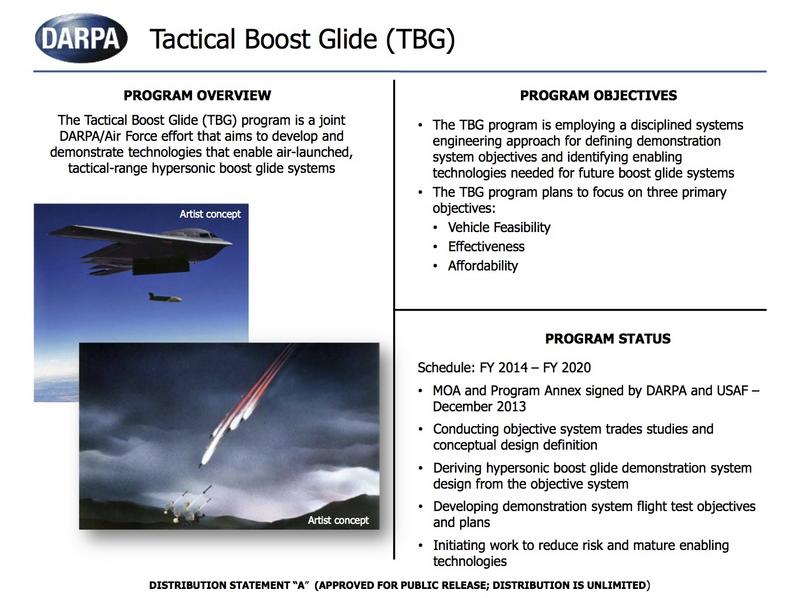
The Hypersonic Conventional Strike Weapon (HCSW), is yet another air launched boost glide weapon that is integrating the more proven Sandia Winged Energetic Reentry Vehicle (SWERV) with a new booster developed specifically for the USAF. It will be a longer ranged weapon compared to the AGM-183A and will likely only be carried by the bombers, possibly just the B-52. The SWERV has had a number of successful tests over the years including two with an Army and Navy optimized booster (ground launch). It forms the basis of the interim common boost glide vehicle warhead for the US Army, Navy and Air Force hypersonic programs that will be fielded into operational service around 2021/2022 starting with the Navy's conventional prompt strike where this weapon will be integrated on either a surface or a sub surface platform (it will be an Intermediate range weapon). The HCSW and the SWERV warhead will likely also form the basis of a Missile Defense Agency target program.
The Tactical Boost Glide system's BGV is considered much more advanced and something that probably builds on top of DARPA's Falcon and as such it will most likely also follow closely behind and form the basis of a common BGV that will first show up on the USAF's AGM-183A, but later on the Army's OpsFire ground launched system which is going to be housing the missiles on either a Logistic Vehicle System Replacement (LVSR), or a HEMTT. Earlier this year, DARPA awarded a strange last minute follow on contract to Raytheon for a second Tactical Boost Glide vehicle design (building on work Raytheon had done through 2018), after the program had already competitively down selected Lockheed months/years ago for the current system that is expected to begin flight testing later this year. This is believed to be an award with a Naval system in mind probably going off off US Navy's interest in a TBG derived weapon system down the road so depending upon the merits of the two designs and the performance requirements for each role, they could split this between Lockheed and Raytheon.
ldev wrote:Could be a dual mode combined cycle turbojet/ramjet, maybe again developed by Aerodyne. That dual mode motor will allow the missile to be carried and dropped from a subsonic platform like the B-52 and will not need any rocket booster like India needs the Agni 1 for launching it's hypersonic . Very interesting.
The HCSW (V?) is not an Air Breather. It's a BG system. I think you are confusing it with HAWC (Hypersonic Air Breathing Weapon) which is a Scramjet that builds off of the X-51 with both the booster stack and the Scramjet developed by Aerojet Rocketdyne as the article above states. It is being developed by Lockheed and as the article quotes the DARPA director it is neck and neck between which weapon demonstrator will have its first flight first. Both the HAWC and TBG are targeting end of 2019 or early 2020 as the launch of their flight test window. The Buff will be the host program for both those test programs.
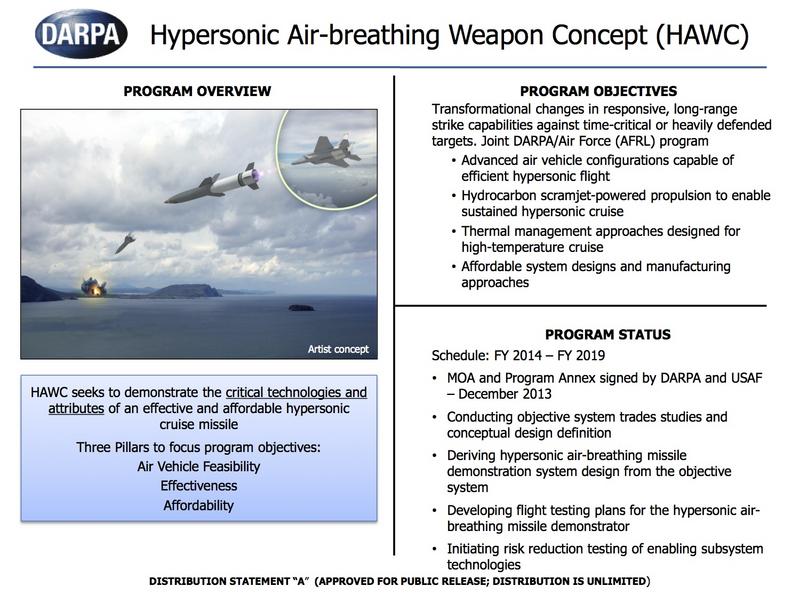
ldev wrote:That dual mode motor will allow the missile to be carried and dropped from a subsonic platform like the B-52 and will not need any rocket booster like India needs the Agni 1 for launching it's hypersonic
It will have a boosted climb to altitude and speed and then ignite the scramjet engine much the same way the X-51 did years ago. Only difference is that they've had years to improve on the technology and because HAWC is a full fledged program and not a technology demonstrator effort they are likely to be creating more optimized booster and other hardware for it (having to scramble spare boosters (ATACMS) and other parts was a hindrance for the X-51 design team). Overall, I expect it to be quite similar to the X-51, though more optimized as a weapon rather than a test vehicle so probably more consideration to things like warhead, guidance etc etc. There is obviously no point in launching the HAWC from the ground for testing because it is an Air Launched weapon so weapons seperation, booster ignite, booster seperation and other AL unique test events would be important things to validate and prove out.
The Advanced Full-Range Engine (AFRE) and the turbine-based combined-cycle (TBCC) project is a seperate DARPA effort, also being worked on by Aerojet Rocketdyne. It is not associated with or linked with HAWC in any way. It too will begin testing in the short-medium term but it does not yet have a USAF/Army/Navy funded production weapons system program on the other side like TBG, HAWC (believed to exist but not yet clearly defined) or HCSW do. There the goal is to combine the dual mode ramjet/scramjet with a standard or modified gas turbine engine so that hypersonic speeds are achieved without the need for rocket motor assistance (essentially going from stand still to hypersonic on air breathing propulsion).
Aerojet Rocketdyne announced some success to that end last year -
https://twitter.com/AerojetRdyne/status ... 9806540801
In all there are about 10-12 hypersonic programs split between the US services and DARPA. I expect this to be pruned down once initial hypersonic capability is fielded in 2021 and 2022, and once risk on some of the more cutting edge ones (like HAWC, TBG and OpsFires) is reduced via demonstrations and validations. So maybe only 5-6 would be going forward long term.
